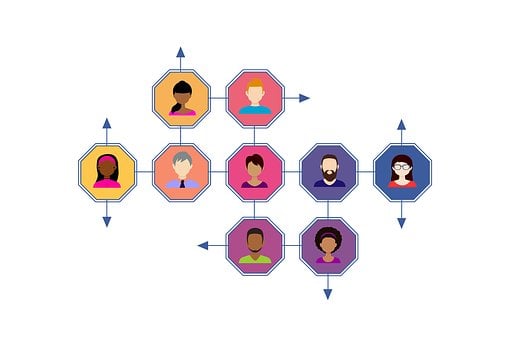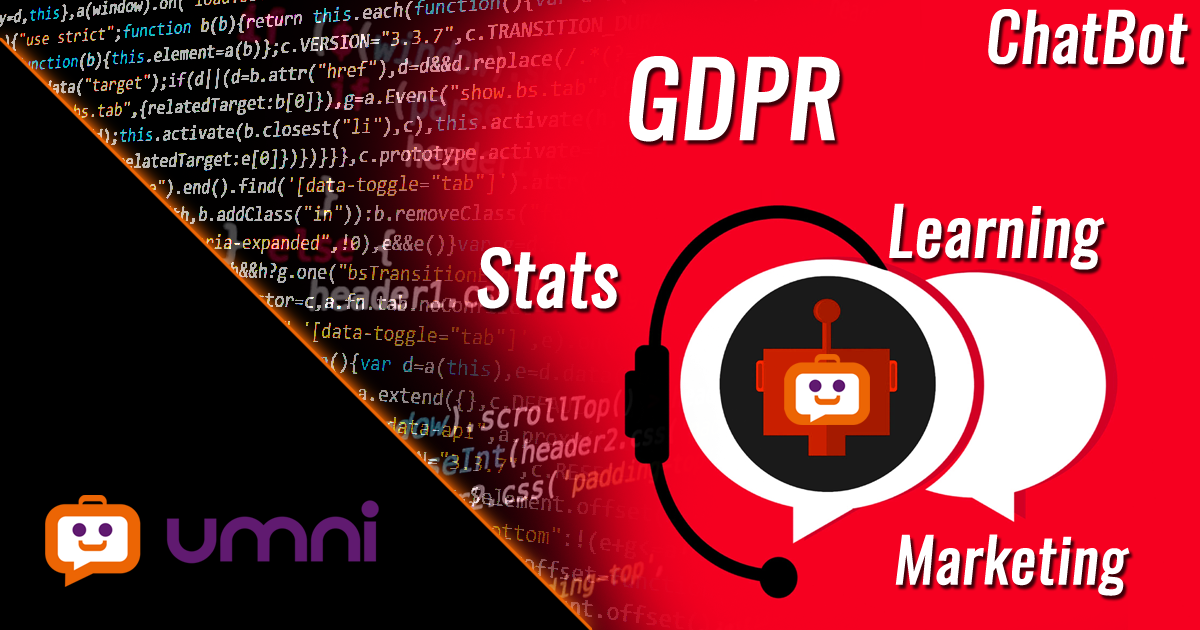Chatbot Agency or Freelancer?
Increasingly, chatbots of businesses and organizations across the world and in our country pop up on our screens. You hear that they save staff time, business resources, improve customer service, and sales go up. You are told that customers expect your business to be online 24/7 and to provide them with a self-service solution. Maybe this is the time for a chatbot in your business.
Creating a chatbot on your own sounds like a great idea. You register on one of the many do-it-yourself platforms, you start clicking, adding pictures, links, and files. There are enough guides and tutorials on Youtube and the internet and there are at least a dozen or so good chatbot platforms on the market right now.
We assume that you have previously determined what the chatbot will do. You have read all about chatbots and know about all the possible functionalities in a chatbot, and you have already selected the best one for your business.
We also assume that you know how to describe the processes in a chatbot and to visualize all the connections in it, how to structure the information – and have written it black on white before you enter the platform and start clicking.
So, your Chatbot is live. However, this is only the beginning – every month from now on you must maintain, develop and adapt it, train it and promote it…
Wasn’t it easier for someone else to do it and maintain it?
Here are some questions to answer before deciding which way to go – to create and maintain the chatbot yourself, assign this job to a “freelancer a friend of mine know”, or trust a chatbot agency.
1. Do you have any programming skills?

Most platforms claim that you can create a chatbot without a drop in programming skills. They offer one way or another a visual assistant for creating a chatbot. Combine different boxes, links, pictures, and other elements – it looks easy. This way however you can make an extremely basic chatbot, nothing more.
For a chatbot to be good in terms of functionality, truly beneficial to the business, staff and the customers – with integrations to external platforms or email, built-in request forms, and other automated through the chatbot tasks, you will need to know to program.
2. Do You want to know what’s really going on in your chatbot?

Most platforms offer some type of statistics. Usually, it comes down to how many times a link has been clicked, possibly how many men and how many women have visited the bot, how many visitors, in general, there are, maybe also from which country they are.
But the number of people who visited the chatbot does not really answer whether they just entered the bot without writing a single message in it.
It is much more important to know how many people returned to your bot this month, how much time they spent in it, how many messages they exchanged, what they searched for and at what time of day… If you really want to know what happens in your chatbot, then you need access to a specialized platform that a chatbot agency would have. In Bulgaria, such a platform with detailed statistics is provided by Chatbot Agency Umni. All Umni customers have access to it and it is called Umni Insight. More about Umni Insight you can find on the link below: Umni Insights – Chatbot Stats
3. Do you know how to train your chatbot to understand and respond meaningfully?

The chatbot is not a list of answered questions in an instant message and is not a repetition of the website.
The essence of a chatbot is to chat – when people ask questions, to understand them and to answer them with the right information. Many chatbot platforms offer the addition of a basic keyword recognition. However, the chatbot only catches one keyword in the sentence. Working with keywords in this way often causes the chatbot to respond incorrectly and appear „dull“.
Let’s take this example.
Let’s say the keyword is park (like a park, for walks).
In this example, if a person writes Where is the nearest park?, the chatbot will respond correctly and provide information about the park.However, what if the user wrote Where can I park my car?, or Where to park in the city? The chatbot will again tell him where the park is, which will be wrong and in other cases could lead to problems.
Of course, you can write word combinations or entire sentences instead of keywords. However, the chatbot will only understand them if there is a 100% match. This will not work because you do not know exactly how the user would structure the sentence and what mistakes he would make.
What you can do to solve the above issue is to integrate into the bot an external tool (from Google or another NLU – conversational AI provider) to help understand what the user is writing and to give the right answer. Here you are facing again plenty of reading, learning, programming and a lot of testing (if you use an external connector such as Janice then knowing how to do the settings) to get the chatbot to talk to its external “brain”.
The easiest way to train a chatbot is to give it to someone to train it for you, and you just must provide the information needed. This shall be someone for whom this is a daily routine and knows how to do it properly, which is what a chatbot agency does.
4. Do you know how to comply with GDPR?

This is a serious topic. With a little more work, the chatbot can be made GDPR compliant, but do you know if you are GDPR compatible? Is this freelancer you hired GDPR compliant? Are the tools used by this freelancer and the location where the information is stored GDPR compliant? Does he himself have GDPR relations with you?
At chatbot agency Umni, we take this matter seriously because it is extremely important from a legal point of view!
IMPORTANT !!! Before you start working on your chatbot, make sure you can create it and maintain it from a GDPR perspective. If you choose to trust someone else for your chatbot, then ask for a Personal Data Processing Agreement between your company and him / her / them.
5. Chatbot development and dynamics

If you have decided to have a basic chatbot with several buttons and links, nothing new happens in it, or to update something from time to time, no special functionalities int it, skip this point.
The life and the development of a good chatbot begin at the time of its “birth” – its activation in Messenger. From now on, the chatbot requires monthly technical and information care – to add dynamic information (for marketing and sales purposes), to maintain and further develop, and to train it:
- Update answers, pricing and other information
- Adding new topics to the smart module based on conversation history with customers. The more topics you have, the “smarter” your chatbot becomes.
- Bot re-training – fixing misunderstood issues
- Creating and deploying bot-specific promotions valid for the chatbot users
- Monitor and support request forms and other functionalities, integrations with email, SMS or other platforms and any other chatbot integrations and connections
- Technical adaptation of the chatbot to the changes in its ecosystem.
Modern technologies are evolving very dynamically, and any change in the chatbot platform where the bot is made, on Facebook, in messenger, in external applications with which your chatbot is integrated, may require to adapt or reconfigure the chatbot to continue to function.
Remember, the chatbot is a dynamic software solution which is a combination of technologies that come together to accomplish tasks, not a complete standalone software installed on someone’s computer.
If you want someone to successfully deal with all these dynamics on behalf of you, this is for sure a job for a chatbot agency. In Bulgaria, many IT companies add a chatbot to their service list, but chatbots are not the focus of their business. Digital marketing agencies that offer a chatbot service limit the use of it to its most basic functionalities, mainly for short-term marketing purposes. Freelancers work on a piece-by-piece basis and only undertake the configuration of a chatbot, rarely engaging in the maintenance and further development of the chatbot.
For its part, the chatbot agency Umni Chat provides a complete cycle of chatbot services – from planning to configuration, maintenance and training, providing its clients with access to the Umni’s MyBot chat management platform, where without any technical knowledge:
- Easily add or change business information in the “smart module”;
- With one click, the staff can connect the chatbot answer to another chatbot section such as to request forms, pricing, etc. to direct users to action
- With a few clicks, the staff can create and manage modules for promotion, pricing of services and more that appear straight into the chatbot.
- With one click staff can confirm or deny requests received through the chatbot
- Access live chat statistics about the user behavior on the chatbot
** If the specifics of your chatbot require a different approach, Umni experts will do their best to provide a personalized solution…
6. We have a chatbot, now what? Promoting the chatbot

Wonderful! You have a chatbot or have been given access to the platform where it was built on, to manage and develop it yourself. And now what?
The chatbot does not search for users on its own. You must direct them to it so that it may do the work for which it was created. Do you know any good practices and interesting ideas on how to position a chatbot online and offline to attract users to it?
Do you follow the changes on Facebook (or other messenger platforms) from a chatbot marketing point of view – what and when can be done in a chatbot and what are the restrictions, so as not to break any rules of the platform and to get your chatbot or account in trouble? What will be the effect of any feature changes on the functionality of your chatbot?
Do you know what the 24 hours rule means for Facebook chatbots and what messages you can send via bot to your customers? Are there technical or other loopholes in the rules and what are they?
If you do not know the answers to these questions and do not have the time to read daily various platform documentation, chatbot blogs, forums, and case studies to gain interesting, useful and up-to-date information from them, you better work with those who can help you and provide you with such information, process and collect it for you.
For example, chatbot agency Umni provides its clients with a guidebook with helpful ideas and tips for promoting a chatbot, “I have a chatbot, now what?”. Customers receive current news and updates by email.
Here’s a tip from the guidebook you probably didn’t think about:
Set the website to show a pop-up with attractive text and image, and a link to the chatbot when the user tries to close the page.
We hope this article has been useful for you to navigate and avoid the many common mistakes associated with creating and using a chatbot.
